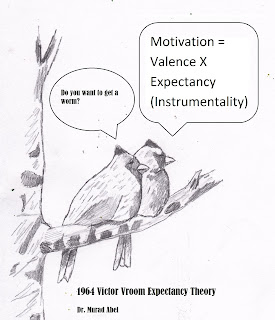As a theory Freud discussed the Id, Ego and Superego that interact throughout the 5 psychosexual stages of development that include oral, anal, phallic, latency and genital stages. Each of these stages are that which a child might experience and develop their personality with. If a person becomes stuck in any one of the stages it will skew their personality. Stuck individuals may develop personality quirks that impact their management styles.
Learning management from Freud isn't necessarily about agreeing or not agreeing with his theories. It is more about finding a mental framework for understanding employee needs, their rational side, and their balanced side as expressed in Freud's Id, Ego and Super Ego. Putting a framework together for understanding employees is beneficial for understanding behavior in the workplace.
Each employee has some needs that draws them to their place of employment and as long as we understand what motivates these employees we can also understand how to retain them and encourage higher levels of performance. One employee may be more motivated by social recognition while another through a need for accomplishment.
Strong managers understand their employees and take enough time to determine what makes them "tick". Once they understand their employees needs they can work toward adjusting the work environment to help fulfill those needs as well as produce higher levels of output. Such activities are likely to result in higher retention and performance rates.
Let us assume you were watching and paying attention to what themes run through an employee's conversations and you were able to determine the employees motivational buttons such as social recognition and income obtainment. According to Freud such personality was formed through the psychosexual stages and how the Id, Ego and Super Ego were formed.
Knowing that your employee wants to have social recognition and income obtainment will help you design a path of development for that employee. Offering raises for exceptional work and conclusion of projects is one aspect of the job that may work for a time. Adding a social recognition side when higher performance is exhibited is another one.
Where you believe in Freud's theories or not is not really the issue. Becoming aware of the need to understand your employees, what motivates them, and the components of their personality is important. Like Freud, look for their motivations, themes, and interests to determine what interests the employee and what doesn't. It is not an invasive process only a process of awareness into the necessity of communicating with employees, actually listening to what they need, and trying to find win-win situations for both the employee and the company.
oral, anal, phallic, latency, and genital stages
Source: Boundless. “Freud's Psychosexual Theory of Development.” Boundless Psychology. Boundless, 27 Jun. 2014. Retrieved 01 Jan. 2015 from https://www.boundless.com/psychology/textbooks/boundless-psychology-textbook/human-development-14/theories-of-human-development-70/freud-s-psychosexual-theory-of-development-267-12802/
Source: Boundless. “Freud's Psychosexual Theory of Development.” Boundless Psychology. Boundless, 27 Jun. 2014. Retrieved 01 Jan. 2015 from https://www.boundless.com/psychology/textbooks/boundless-psychology-textbook/human-development-14/theories-of-human-development-70/freud-s-psychosexual-theory-of-development-267-12802/
oral, anal, phallic, latency, and genital stages
Source: Boundless. “Freud's Psychosexual Theory of Development.” Boundless Psychology. Boundless, 27 Jun. 2014. Retrieved 01 Jan. 2015 from https://www.boundless.com/psychology/textbooks/boundless-psychology-textbook/human-development-14/theories-of-human-development-70/freud-s-psychosexual-theory-of-development-267-12802/
Source: Boundless. “Freud's Psychosexual Theory of Development.” Boundless Psychology. Boundless, 27 Jun. 2014. Retrieved 01 Jan. 2015 from https://www.boundless.com/psychology/textbooks/boundless-psychology-textbook/human-development-14/theories-of-human-development-70/freud-s-psychosexual-theory-of-development-267-12802/
oral, anal, phallic, latency, and genital stages
Source: Boundless. “Freud's Psychosexual Theory of Development.” Boundless Psychology. Boundless, 27 Jun. 2014. Retrieved 01 Jan. 2015 from https://www.boundless.com/psychology/textbooks/boundless-psychology-textbook/human-development-14/theories-of-human-development-70/freud-s-psychosexual-theory-of-development-267-12802/
Source: Boundless. “Freud's Psychosexual Theory of Development.” Boundless Psychology. Boundless, 27 Jun. 2014. Retrieved 01 Jan. 2015 from https://www.boundless.com/psychology/textbooks/boundless-psychology-textbook/human-development-14/theories-of-human-development-70/freud-s-psychosexual-theory-of-development-267-12802/

